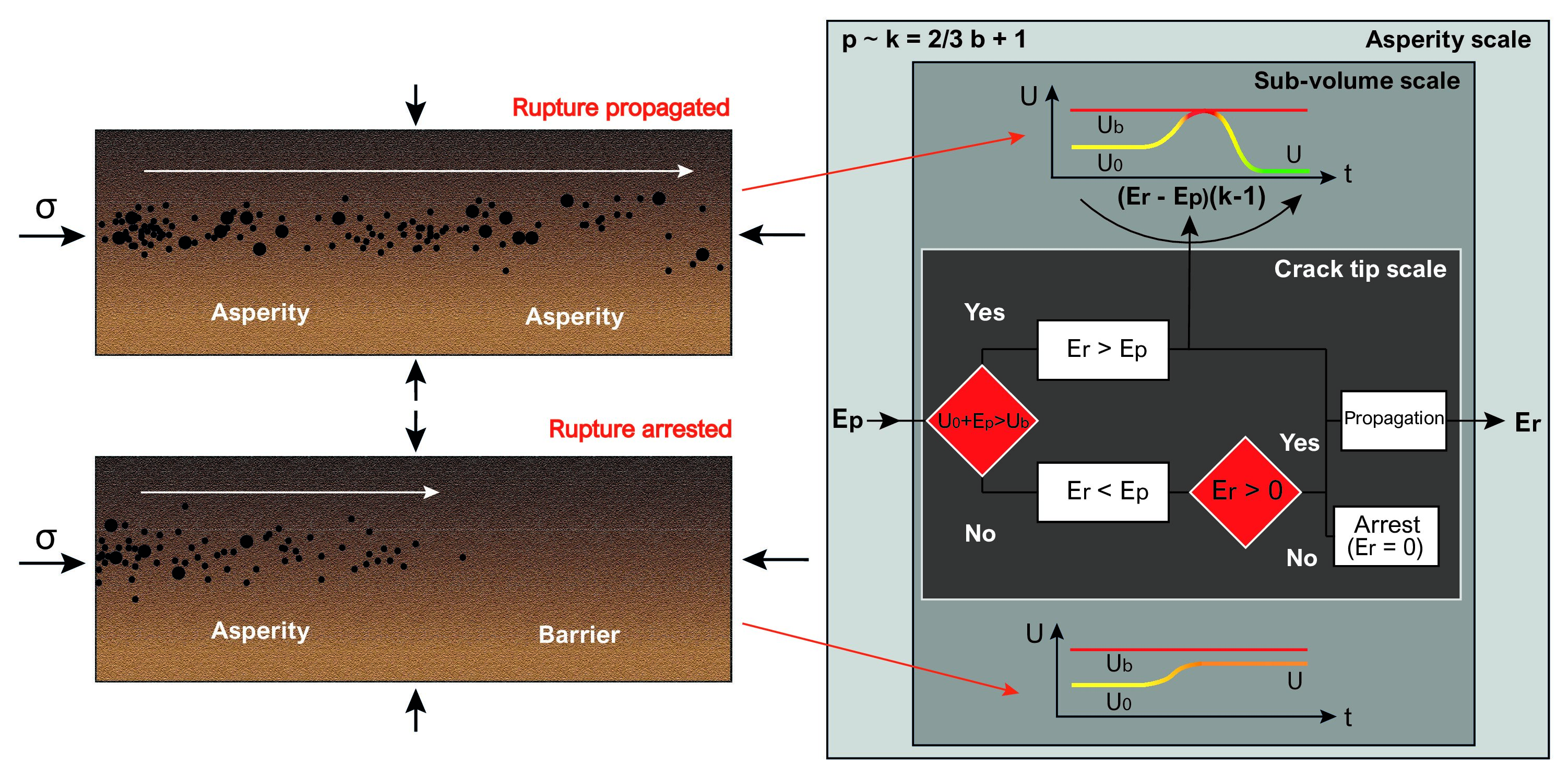The Gutenberg–Richter law and the Omori law are both characterized by a scaling behavior. However, their relation is still an open question. Although several hypotheses have been formulated, a comprehensive geophysical mechanism is still missing to explain the observed variability of the scaling exponents b-value and p-value, e.g., correlating the seismic cycle to statistical seismology and tectonic processes. In this work, a model for describing the size-frequency scaling and the temporal evolution of seismicity is proposed starting from simple assumptions. The parameter describing how the number of earthquakes decreases after a major seismic event, p, turns out to be positively correlated to the exponent of the frequency-size distribution of seismicity, b, and related to tectonics. Our findings suggest that p = 2/3 (b+1). It implies that a relationship between fracturing regimes, “efficiency” of the seismic process, duration of the seismic sequences and geodynamic setting exists, with outstanding potential impact on seismic hazard. On the other hand, the Gutenberg–Richter law simply reflects the tendency of the segments of the Earth’s crust to reach mechanical stability via constrained energy-budget optimization. Each perturbation has a probability of growing an earthquake or not, depending on disorder within the fault zone and the energy accumulated in the adjoining volume, mainly controlling the evolution of seismic sequences. The results are consistent with the different energy sources related to the tectonic settings, i.e., gravitational in extensional regimes, having higher b and p values, and generating lower maximum magnitude earthquakes with respect to strike-slip and contractional settings, which are rather fueled by elastic energy, showing lower b and p values, and they may generate higher magnitude events.
https://www.sciencedirect.com/science/article/pii/S0012821X22001479

